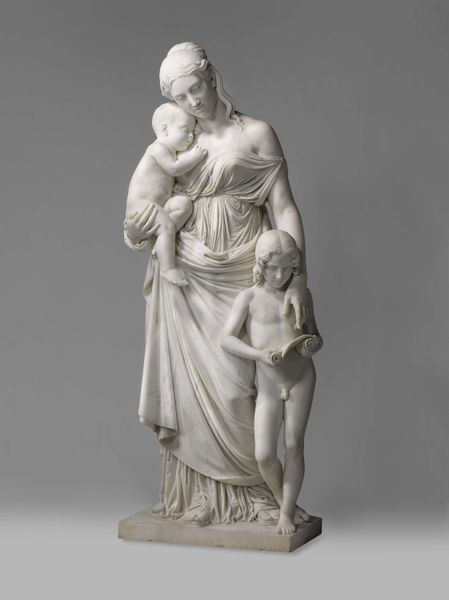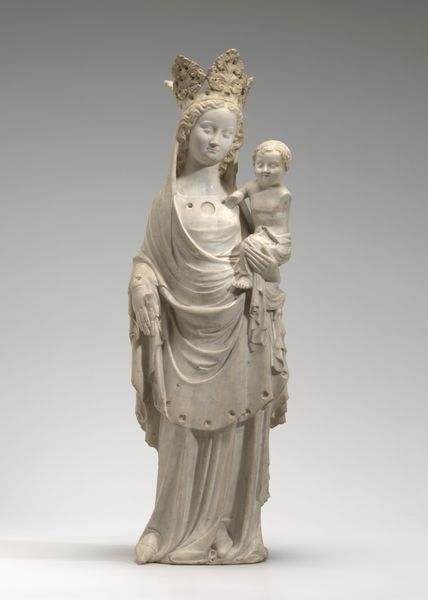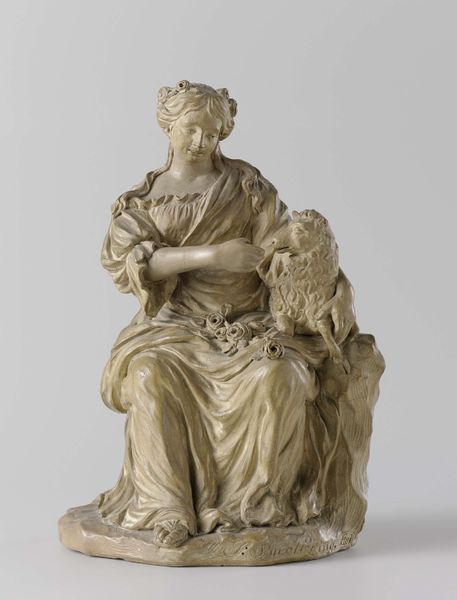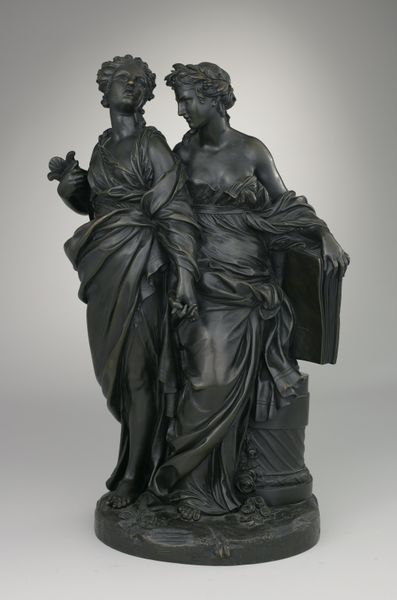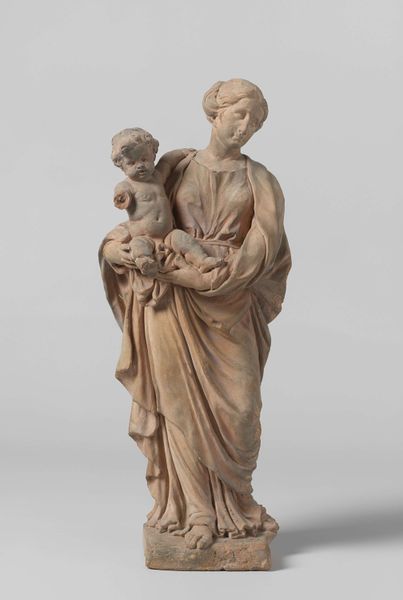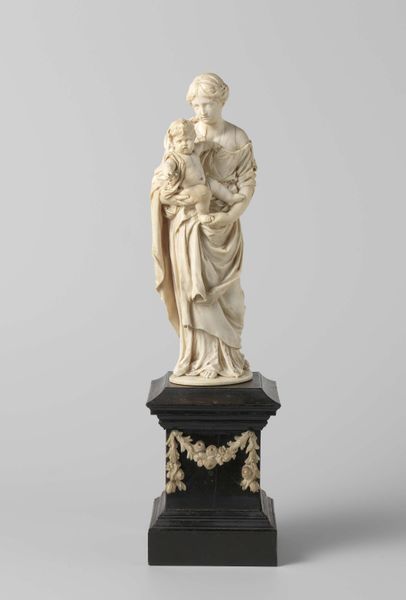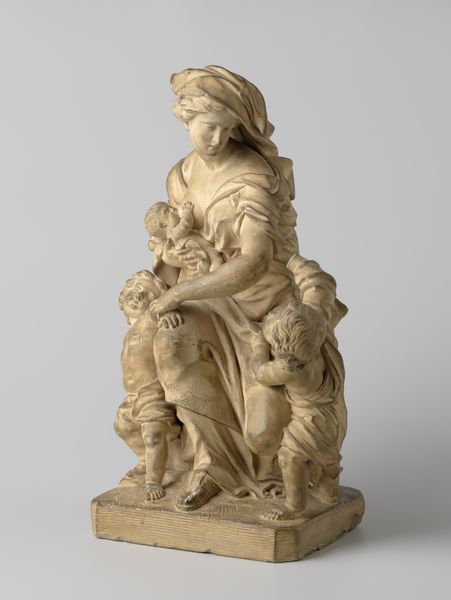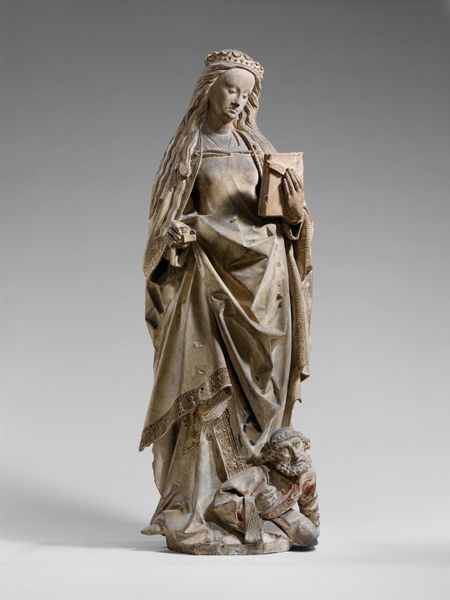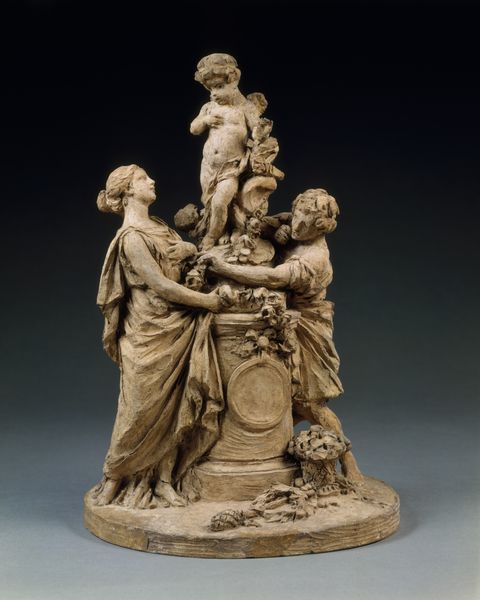
sculpture, marble
#
neoclacissism
#
allegory
#
sculpture
#
figuration
#
sculpture
#
history-painting
#
marble
Dimensions: height 47 cm, width 31 cm, depth 19 cm, depth 17 cm, depth 27 cm, weight 12.4 kg
Copyright: Rijks Museum: Open Domain
Editor: This is "Allegory of the United Kingdom of the Netherlands," a marble sculpture by Jean-Louis van Geel, created in 1816. I find it fascinating how the artist chose marble, a material often associated with permanence and power, to depict a relatively short-lived political union. What's your take on this work? Curator: From a materialist perspective, the choice of marble itself speaks volumes about the aspirations and anxieties of the United Kingdom of the Netherlands. Marble connects it to the traditions of empires and classical ideals of governance. But marble also requires immense labor to quarry, transport, and carve. Van Geel and his workshop were investing in this material and therefore the kingdom, using manpower, equipment, and funding to turn a raw material into a finished commodity with a specific message. The act of creation is inherently linked to social and economic systems. Editor: That’s an interesting point. It is almost like the very act of making this sculpture in marble becomes a display of the Kingdom’s power and resources, similar to building monumental architecture. Does the Neoclassical style then also tie into that? Curator: Exactly. The Neoclassical style—the smooth surfaces, the idealized forms—reinforces this connection to a lineage of powerful, often exploitative, empires, each drawing materials from various places using considerable labor. Think of where the marble originated and how its extraction might have affected local communities. How the Kingdom is literally and figuratively built from marble connects the visual impact to its underlying structures of production and consumption. It asks, what are the Kingdom's building blocks? And for whom is this grand statue ultimately created, commissioned, and displayed? Editor: I never considered the origins of the marble itself as part of the narrative! This makes me rethink the sculpture entirely. Curator: Art history becomes so much richer when we dig into these connections between the physical world and the artwork’s message.
Comments
No comments
Be the first to comment and join the conversation on the ultimate creative platform.

